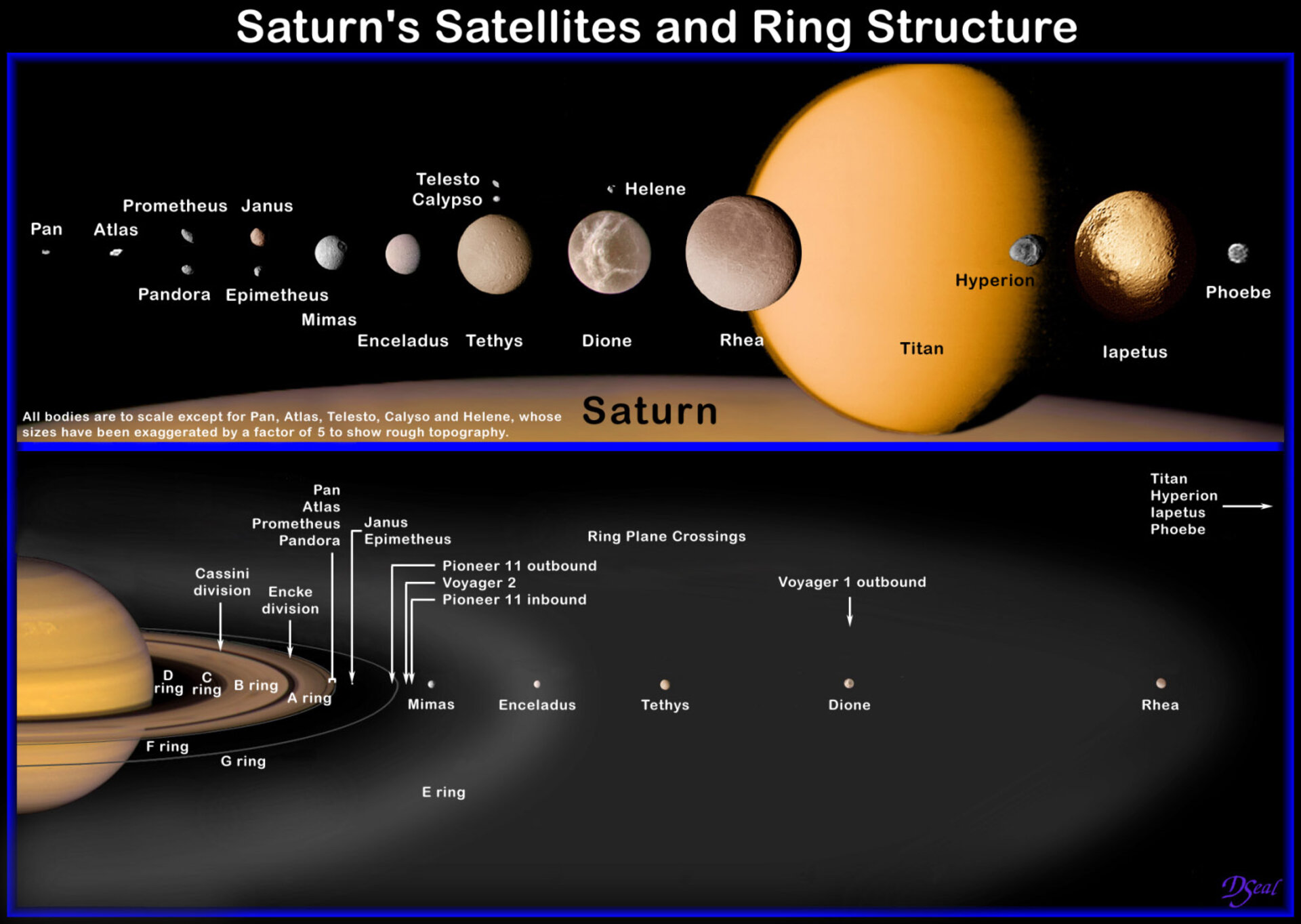

^ IAUC 5347: Satellites of Saturn and Neptune 1991 September 16 (naming the moon)."Visual detection of 1981 S 13, Saturn's eighteenth satellite, and its role in the Encke gap". Bulletin of the American Astronomical Society. "Visual Detection of 1981 S 13, the Encke Gap Moonlet".

"Satellite "wakes" and the orbit of the Encke Gap moonlet". Wavy Edges Suggest Moonlet in Encke's Gap, Astrophysical Journal, Vol. ^ "Saturn's Tiny Moon Pan Looks Like a Ravioli".Archived from the original on 7 September 2015. "Sizes, shapes, and derived properties of the saturnian satellites after the Cassini nominal mission" (PDF). "Revised orbits of Saturn's small inner satellites". (Subscription or participating institution membership required.) The Encke Gap, within which Pan orbits, is about 325 km wide. Its inclination, which would cause it to move up and down, is not distinguishable from zero with present data. The eccentricity of Pan's orbit causes its distance from Saturn to vary by ~4 km. This is a reference to Pan's role as a shepherd moon. The moon was named on 16 September 1991, after the mythological Pan, who was (among other things) the god of shepherds. In all, it appears in eleven Voyager 2 images. Every qualifying Voyager 2 image with resolution better than ~50 km/pixel shows Pan clearly. The search was undertaken by considering all Voyager 2 images and using a computer calculation to predict whether the moon would be visible under sufficiently favorable conditions in each one. The moon was later found within 1° of the predicted position. The actual semi-major axis differs by 19 km and the actual mass is 8.6 ×10 −12 of Saturn's. They arrived at a very precise prediction of 133,603 ± 10 km for the semi-major axis and a mass of 5–10 ×10 −12 Saturn masses, and inferred that there was only a single moon within the Encke gap. inferred its orbit and mass by modeling its gravitational wake. Scargle in 1985, based on wavy edges of the gap which indicated a gravitational disturbance. The existence of a moon in the Encke Gap was first predicted by Jeffrey N.


 0 kommentar(er)
0 kommentar(er)
